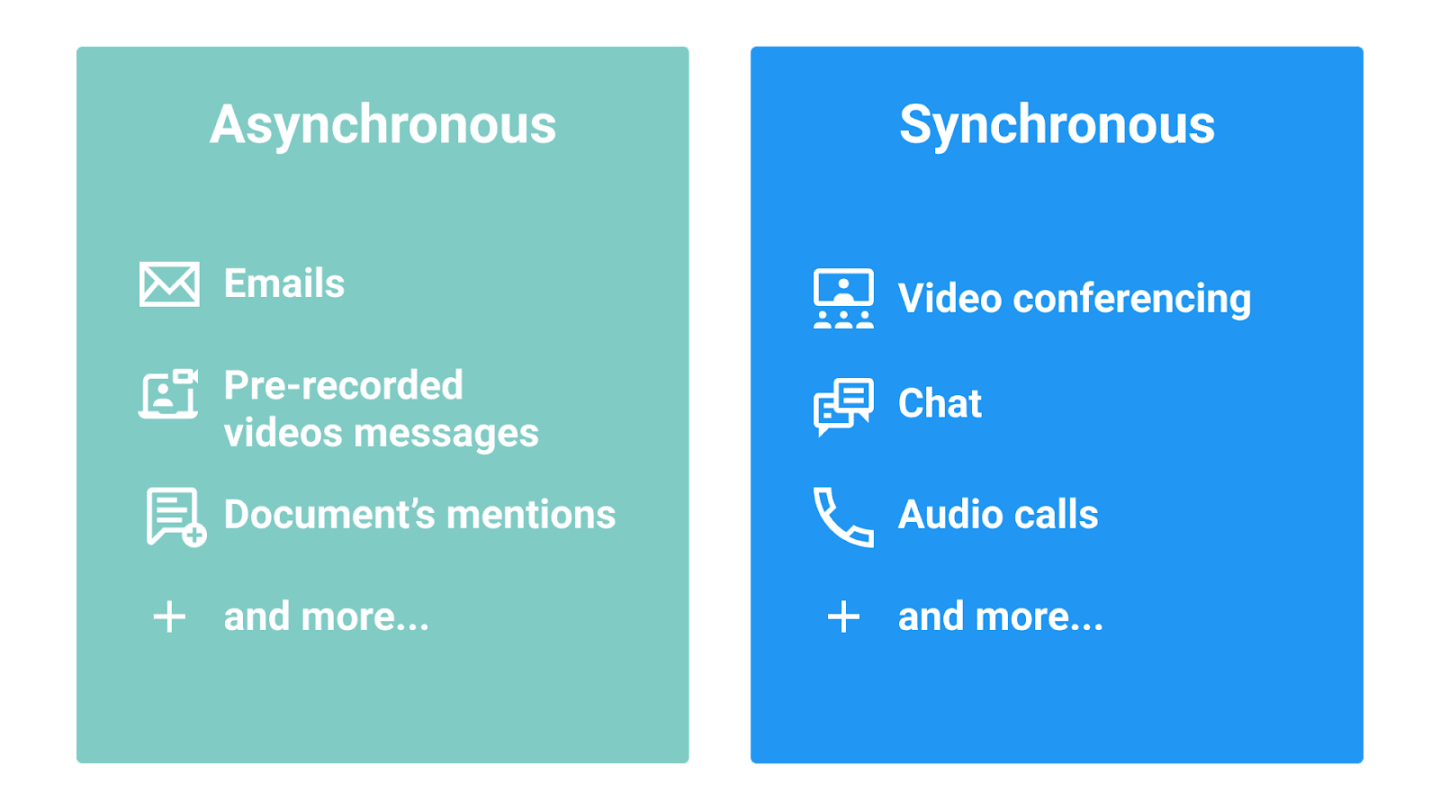An outsourced team can bring many benefits to your software project.
For instance, it could significantly reduce your labor costs and allow you to have more free time to focus on more critical tasks for your business.
On the flip side, managing a remote team also has its share of obstacles. These include time zone differences, language barriers, and security risks.
Fortunately, there are workarounds to help you resolve some of the issues. And we hope these six tips can get you started.
Outline the external development team’s responsibilities
One of the pitfalls of a remote work arrangement is communication. You can’t collaborate as easily when you’re not in the same space.
Thus, it’s best to outline the development team’s responsibilities early on.
This ensures that they can work independently without constant supervision. It also helps avoid misunderstandings, which could easily happen in a remote work setting.
Ideally, you’ll do this during the pre-planning stage at the beginning of your work relationship. Here are the steps involved.
First, go through the project’s goals and requirements. It’s always a good idea to start with the end result you want to achieve so that the team has something to aim for.
Then you need to discuss the scope of the project. In essence, this is where you break down the project goal into its components, such as deliverables, risks, and resources.
Source: Walking Tree
From here, you can now define the roles and responsibilities needed for the project and assign them to corresponding team members.
This includes the person each team member needs to report to.
For instance, you might require your developers to touch base with your in-house senior developer or a project manager at the end of each workday.
Learn from a software company founder.
Make your software product successful with monthly insights from our own Marko Strizic.
Finally, determine project deadlines. However, it’s important to include feedback from your team members here.
This helps avoid unreasonable work schedules that could lead to overwork or poor output.
Ideally, everything discussed in the pre-project planning should be put into a statement of work.
That way, the team will always have a point of reference regarding their roles and responsibilities throughout the project.
Source: Asana
The bottom line is that it’s your responsibility to give your team everything they’ll need to succeed, including clear directions.
Schedule work with time zones in mind
Another obstacle when working with an external development team is scheduling.
Chances are, your external team is from a different time zone, which makes real-time communication especially difficult.
The best solution is to find a time zone overlap. This is where you find common times in your and the remote team’s workday when you can do collaborative, real-time work.
For instance, a developer in Sao Paulo is three hours behind their client in London.
That means that, in a typical 8-hour workday, there’s a five-hour window between them where they can schedule virtual meetings, project reviews, and the like.
Source: Revelo
However, time zone overlap only works with nearshore teams, where the time zone difference is only a few hours at best.
If your team is in an opposite time zone, scheduling common working times will be much harder. Although it’s not impossible, it will involve more adjustments on either side.
For instance, Manila is 13 hours ahead of New York. Therefore, when it’s nighttime in New York, it’s daytime in Manila, eliminating any shared working hours.
The only workaround is to schedule virtual meetings outside regular working hours.
For this, it’s best to use an online tool like Time and Date’s World Clock Meeting Planner, which looks like this:
Source: Time and Date
What you want are the time slots highlighted in yellow for both time zones, which indicate a reasonable overlap.
So, for instance, the Manila team can schedule a 7:00 AM meeting, which is around 6:00 PM in New York—still a good workaround.
Of course, the drawback here is that you’ll only have a few hours to get in touch with the team at best. Thus, you need to plan your activities carefully to maximize that window.
For instance, in the above example, scheduling review/feedback meetings at 7:00 AM Manila time (6:00 PM New York time) might be a good idea.
That way, the development team has the whole day to work on revisions in time for the next morning’s review.
But regardless of your time zone differences, making an outsourced schedule work can be a tall order. It requires much thought, sacrifice, and discipline.
That’s why it’s often preferable to consider a nearshore arrangement to save yourself the headache.
Agree on which collaboration tools to use
As we said in the first section, communication is a major challenge when working with remote teams. One way to overcome that is through the smart use of collaboration tools.
Platforms like Slack, Zoom, and Asana can help you communicate with a remote team as if they were in the same building.
They allow your in-house and outsourced developers to talk, plan, and even edit the same source code online.
However, it’s also important to pick the right collaboration tools for your team. Picking the wrong tool is just as bad as not having any in the first place.
For example, some people might find that constant interruption from a real-time messaging tool ruins their concentration.
In this case, it could be more beneficial to use a less-intrusive communication channel like email.
Thus, you need to agree with your development team on which collaboration tools you’ll use and how.
Start by dividing your communication needs into two categories—synchronous and asynchronous.
Source: Gmelius
Synchronous communication, or real-time communication, requires an immediate reply from the other party. Examples of this include audio calls and teleconferencing.
Asynchronous communication, on the other hand, gives the receiver the flexibility to respond at any time.
That makes it a good approach when working with teams in different time zones. Examples of this mode of communication include email and instant messaging.
Then, list down scenarios under each category.
For instance, asynchronous collaboration might involve file sharing, project management, and source code management.
On the other hand, synchronous collaboration might be in the form of weekly meetings, client review sessions, and one-on-one calls.
Finally, choose the appropriate digital solution for each scenario.
Here are some to start with.
Source: CB Insights
It’s important to note that each tool has its pros and cons, depending on your situation, budget, and preferences.
For instance, if you only need a simple project management platform, Trello is preferable to Asana.
It’s also worthwhile to consider how each tool integrates with the other.
For instance, Slack has integrations with dozens of other platforms like Jira and Asana, making it a popular choice for us at DECODE.
Whichever you choose, it’s important to include your development team in the selection process whenever possible. That way, you’ll be assured they will use it.
Avoid micromanaging the external development team
Micromanagement—or excessive control over your team—is one of the worst things any manager can do.
True, it can lead to faster work output in the short term. But it ends up hurting your overall team performance in the long term.
Micromanagement communicates to your team that you don’t trust them. This leads to lower engagement, morale, and confidence. At worst, it could cause team members to quit on you.
Source: Gartner
Micromanagement could also disrupt a person’s flow state. Also known as being in the zone, it describes a state of total concentration and immersion.
During these times of focus, a person does their best work.
But constant supervision or interruption from a micromanager will prevent a person from reaching their flow state.
Lastly, micromanagement also harms you. Time spent controlling a development team could be better spent on more productive activities.
However, for some people, it could be difficult to avoid being a micromanager. Maybe they just have a can-do work attitude.
Fortunately, if you tend to micromanage, there are ways to get around it.
The best approach is to adopt the mindset of a coach.
Source: Lighthouse
The key difference is that the coach gives suggestions, while a manager gives demands.
Let’s say one of your developers adopted an approach different from what you had in mind. A micromanager would immediately shut down the idea, insisting that their way is the best.
On the other hand, a coach would look at the merits of the person’s approach and even laud innovative thinking if appropriate.
It would also be a good idea to discuss with your development team how they like to be managed.
Do they work best under constant supervision or thrive better when given autonomy? That helps you formulate the best approach for them.
The bottom line is that trust should be the foundation of any outsourced work relationship.
If you’re confident that you’ve hired the right team to do the work, then you’ll never need to micromanage.
Have regular meetings with the external development team
Having regular meetings is essential for any outsourced working relationship. Not doing so is like managing a team blindly.
Meetings allow you to get regular updates from the team. It can tell you how well the project is progressing compared to the schedule.
If the team encounters a problem, meetings can also be an avenue to brainstorm solutions and tackle them early on.
However, holding meetings using the wrong approach or for the wrong reasons is worse than not having them at all!
So, it’s crucial to be intentional with your meetings, and not just hold them so you can say that you did.
First, you must be clear about the purpose of your meeting before starting it. Will it just be for regular updates? Or is there a pressing problem that you want to solve?
Source: SessionLab
In line with this, your meeting should also have a clear agenda and timeframe. Without it, you risk extending it unnecessarily and wasting everyone’s time.
Also, be sure to set regular meetings in advance. This ensures that people can schedule their work around them so their productivity won’t be affected.
Hold emergency meetings only when necessary.
Remember, meetings can save time as much as they can waste it. Be sure it’s the former!
Connect with the external development team
One of the drawbacks of working with a remote team is that the human aspect is less prominent.
Many forget there’s a real person on the other end, sending an email or receiving an instant message.
In fact, a study by Airspeed found that 72% of remote workers face a lack of socialization, with 33% reporting that they’re feeling lonely.
That’s why connecting with your remote team on a more personal level is vital.
You’ll be talking with our technology experts.
The best approach is to meet your team, in person if possible! This helps you get to know them better and even see their work culture firsthand.
Most importantly, it conveys that you care enough to visit them.
In fact, this is one of the perks of nearshoring your development team. For more information on this topic, please read our article here.
Of course, flying to visit your remote team isn’t always possible. But there are little things you can do to make them feel connected.
First, encourage everyone to turn on their video during teleconferencing. Putting a face behind the voice can help humanize the experience for all participants.
Also, it would help if you encouraged your team to talk about things outside work. For example, you can have Slack channels dedicated to hobbies or topics people are interested in.
Virtual team buildings and happy hours are also welcome. Ask everyone to bring their favorite drink, crack open a video game or teambuilding activity, and have fun!
Source: Snack Nation
The bottom line is to treat your remote team as human beings. And that means meeting their need for belongingness and social acceptance.
In the long run, this can lead to a cohesive, high-functional team.
We saved the best tip for last
The best tip for managing an external team starts before you even hire one.
See, if you partner with a reliable, reputable, and competent team, half of the work is already done.
You won’t exert as much effort to make your outsourced relationship function because it just does!
And if you’re looking for such a team, why not consider DECODE?
Get in touch with us today, and see how we can deliver the best software development experience possible.















